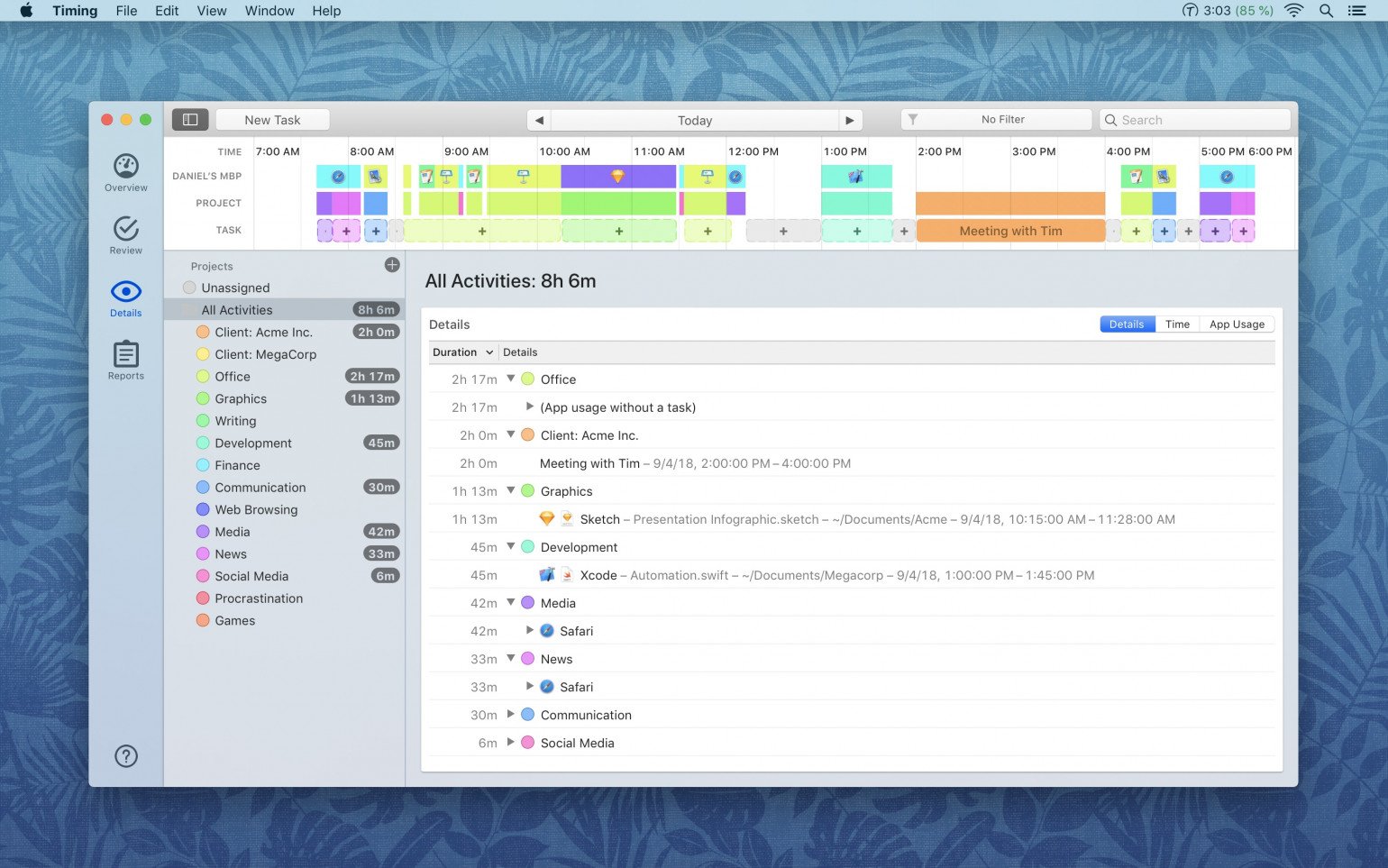Time-Tracking: How to Use it with Your Personality Type

If the phrase “time-tracking” gives you an immediate sense of relief and calm, it’s because you enjoy order, structure, and maybe even a few rules and regulations. You’re most likely a type A personality (or a “3” or “1” on the enneagram).
On the other hand, if “time-tracking” makes you cringe, it might be because time management makes you feel a little constrained. You’re probably a type B (or a “7” or “9” on the enneagram).
In any case, type A and type B personalities will certainly approach time-tracking with a different set of ideas, emotions, and expectations. That doesn’t, however, mean that time-tracking – whether used for your personal or professional life – is right for one type and not the other. When wielded correctly, time-tracking can be used by any personality type to achieve great outcomes. Share on X These include increased productivity and efficiency, more goals reached, and ultimately, a more effective professional life (and higher income).
And who doesn’t want that?
Table of Contents
Time-Tracking for Type A Personalities
If you identify as a type A or you’re simply a super-structured person, you probably relate to the following:
- You pay attention to the details.
- You enjoy creating and working with structure.
- Disorder or change can make you feel uncomfortable.
- You love to set (and meet) goals.
Bottom line: You like getting stuff done.
Here’s how you might use time-tracking to achieve even more.
Set Goals & Stay Accountable to Them
Chances are, type A personalities are already setting goals – both short-term and long-term – to help them make progress and feel productive.
But even the highest-achieving type can have trouble reaching all of their goals…especially when dealing with frequent distractions, task-juggling, or multiple responsibilities at work.
Time-tracking can help type A personalities get a higher rate of goal completion by giving them the tools to stay accountable.
For example, at the beginning of each work day, type A’s might want to set three major goals. Let’s say those include: a) finish pricing proposal for Client A, b) edit blog article for Client B, and c) create an email newsletter for Client C. Using automatic time-tracking, this type A personality can take a look at what was accomplished.
By looking at their “Review” tab on Timing, they can look at how long each goal took, and why they might have gotten distracted from completing those goals throughout the day. Here’s what the “Review” tab looks like, shown below.

Check Progress Over Time
Type A personalities generally value linear progress. They like to measure improvement and see how they’re evolving and developing as a professional.
Automatic time-tracking with Timing gives type A personalities the ability to check their progress over time, whether that’s over a week, a month, a quarter, or even a year. By using their “Overview” tab, they can adjust “Today” to pretty much any desired time frame, and then check:
- How their time usage evolved from day to day (or month to month).
- Their most active weekdays and hours.
- How much total time they’ve spent on various applications and systems from day to day (or month to month).
- Total time spent on various projects or clients from day to day (or month to month).
- And even their most productive weekdays and hours.
Ultimately, Timing’s “Overview” gives Type A’s the insight they need to answer the question: Am I getting better?
Generate Detailed Reports
Finally, type A personalities typically love details – and automatic time-tracking with Timing can help them to generate highly detailed reports on their personal time usage.
By going to the “Reports” tab in Timing, type A’s can adjust settings to:
- Produce reports by week, day, month, year, or custom time-frame.
- Include as little or as much detail as they’d like in a report.
- Measure time per app or per document.
- And more–basically, to produce any kind of report desired.
Whether type A’s use these reports simply for personal usage, or for client invoicing, Timing gives them the tools they need to produce concrete, detailed evidence of their oh-so-impressive time usage.
Time-Tracking for Type B Personalities
If you identify as a type B or you’re simply a more go-with-the-flow, freethinking person, then you probably relate to the following:
- You value spontaneity over structure.
- You’ve often been described as “free-flowing.”
- You’re more of a creative type.
- Lots of rules and regulations make you feel constricted.
In any case, you’re a bit more laid-back than your type A counterparts – but that doesn’t make you any less driven.
Here’s how you might use time-tracking to help you stay in the flow without falling out of the guardrails.
Create Projects for More Detailed Insight
Here’s the good news about automated time-tracking for type B personalities: it can help you “do you” and still stay organized and get detailed insight into your time usage. That’s because it does all of the administrative heavy-lifting. You can keep producing and creating for clients without worrying about the nitpicky details (or dealing with start and stop timers).
To help Timing work for you, however, you’ll need to take this one valuable step: create Projects to automate categorization of your time usage. “Projects” can refer to specific clients or longer-term projects – any kind of category that would be most helpful for tracking your time.
Here’s how to do that:
- Go to your Review tab and click on the “plus” sign on the project list. This will present a dialog where you can configure a particular project’s properties.
- Now, create rules by ⌥-dragging and dropping relevant URLs, applications, “paths,” and additional keywords that Timing detects in your work history onto a Project.
The result? Timing automatically categorizes the time you spend on various clients and projects without you lifting a finger.
Check Peak Productivity & Activity
Type B personality types may find themselves “ebbing and flowing” in their time usage – especially if they’re involved in more creative work. It’s helpful to know exactly when they’re most (or least) productive, so that they can plan their workdays accordingly to get into that elusive “state of flow.”
To assess their personal levels of activity and/or productivity, type B’s can go to their “Overview” tab, where they’ll find a nifty bar chart showing when they were most/least productive/active.
Using this insight, they can plan to take breaks when they’re not very productive and/or active, and plan on setting aside time to focus when they’re most likely to slay their goals. The result? A plan that makes the most of that “free flowing” state of mind for type B’s.

Invoice Clients
Type B personalities don’t always love administrative details – even when it involves getting paid. But to get paid, you’ve got to invoice clients (duh).
To easily invoice clients, Type B’s can use Timing’s “Reports” feature to generate detailed reports with just a couple of setting adjustments (as described above). Depending on the needs of their clients, Type B’s can then export the reports in the format of their choice. Attach pricing to the report, attach it to an email, and voila – invoicing is done, no counting hours necessary.
Timing – Ideal for Every Personality Type
Whether you’re type A, type B, or somewhere along the spectrum, automatic time-tracking can be an invaluable tool for helping you to achieve your goals, glean powerful insight, and improve your personal time management. At the end of the day, it’s not about which personality type achieves more; it’s about embracing your individual quirks and preferences to design a working schedule that works for you. To try Timing for free for 14 days, click here.


